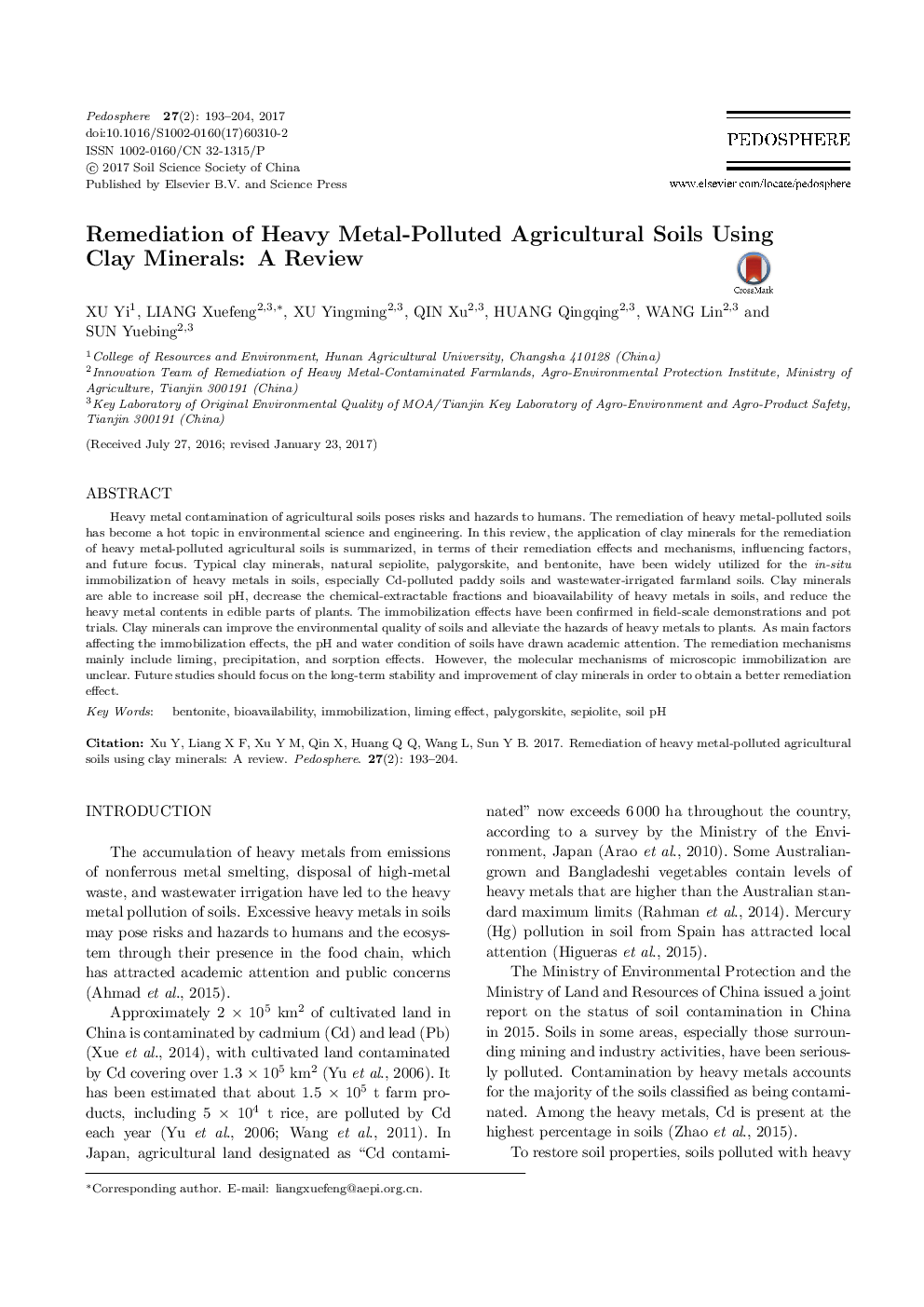| کد مقاله | کد نشریه | سال انتشار | مقاله انگلیسی | نسخه تمام متن |
|---|---|---|---|---|
| 8895505 | 1630327 | 2017 | 12 صفحه PDF | دانلود رایگان |
عنوان انگلیسی مقاله ISI
Remediation of Heavy Metal-Polluted Agricultural Soils Using Clay Minerals: A Review
ترجمه فارسی عنوان
ترمیم خاک های کشاورزی آلوده به فلزات سنگین با استفاده از مواد معدنی خاک رس: یک بررسی
دانلود مقاله + سفارش ترجمه
دانلود مقاله ISI انگلیسی
رایگان برای ایرانیان
کلمات کلیدی
موضوعات مرتبط
علوم زیستی و بیوفناوری
علوم کشاورزی و بیولوژیک
دانش خاک شناسی
چکیده انگلیسی
Heavy metal contamination of agricultural soils poses risks and hazards to humans. The remediation of heavy metal-polluted soils has become a hot topic in environmental science and engineering. In this review, the application of clay minerals for the remediation of heavy metal-polluted agricultural soils is summarized, in terms of their remediation effects and mechanisms, influencing factors, and future focus. Typical clay minerals, natural sepiolite, palygorskite, and bentonite, have been widely utilized for the in-situ immobilization of heavy metals in soils, especially Cd-polluted paddy soils and wastewater-irrigated farmland soils. Clay minerals are able to increase soil pH, decrease the chemical-extractable fractions and bioavailability of heavy metals in soils, and reduce the heavy metal contents in edible parts of plants. The immobilization effects have been confirmed in field-scale demonstrations and pot trials. Clay minerals can improve the environmental quality of soils and alleviate the hazards of heavy metals to plants. As main factors affecting the immobilization effects, the pH and water condition of soils have drawn academic attention. The remediation mechanisms mainly include liming, precipitation, and sorption effects. However, the molecular mechanisms of microscopic immobilization are unclear. Future studies should focus on the long-term stability and improvement of clay minerals in order to obtain a better remediation effect.
ناشر
Database: Elsevier - ScienceDirect (ساینس دایرکت)
Journal: Pedosphere - Volume 27, Issue 2, April 2017, Pages 193-204
Journal: Pedosphere - Volume 27, Issue 2, April 2017, Pages 193-204
نویسندگان
Yi XU, Xuefeng LIANG, Yingming XU, Xu QIN, Qingqing HUANG, Lin WANG, Yuebing SUN,
